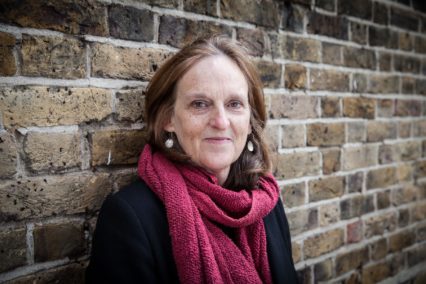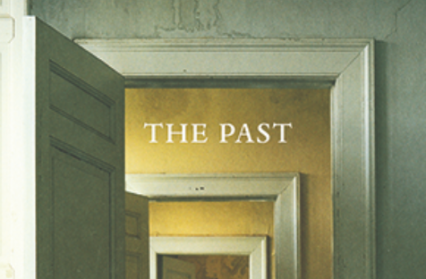Valerie Sirr reviews The Past, a memorable novel about children, childhood, imagination by award-winning author Tessa Hadley.
Elizabeth Bowen is acknowledged by Tessa Hadley as one of her influences, and Hadley has stated that she borrowed the structure of her latest novel The Past from Bowen’s The House in Paris – made up of three parts: The Present, The Past, The Present. Bowen’s 1935 novel, often judged to be her finest, contains elements of realism and modernism, playing with time and perspective and revealing plot with her brilliant formal instinctiveness. Hadley plays with linear time, and is an intuitive writer with some deliberation here too. She creates powerful emotional effects and there is much brilliance in The Past, particularly in the patient precision of her sentences; in her ability to evoke landscape that makes it an essential component of the story in a way that brings to mind D.H. Lawrence; in her exquisitely observed child characters – very like Bowen in this (and in her themes, of family, betrayal, time).
A British middle-class family of three adult sisters and their brother arrive at their grandparents’ old house, a small English rectory, for a three week summer holiday, which ends with a meeting to decide on whether or not to keep the house. Hadley’s skill makes it effortless for the reader to follow the many characters. We are in 21st century real-time narrative in a house that is hauntingly full of the past. Gorgeous repeating images of mirrors, rain, the imprint on the bottom of antique teacups (lineage being another theme), and slight shifts in light heighten our experience of the siblings’ nostalgia and other yearnings. Claustrophobia is lessened by the extension beyond the inside of the house and its inhabitants to landscape and history, including the 1968 workers and student riots in Paris and the disappeared of Argentina, home country of Pilar, new wife of Roland, the brother in the family. There is also an old woodland cottage, like something out of a fairy tale, ‘The children were aware at once that the cottage smelled awful – not innocently of leaf-rot and minerals like outside, but of something held furtively close, ripening in secret,’ where many of the significant events of the novel take place. Like the rectory its continuing presence in the family’s life is poignantly precarious.
Through Tessa Hadley’s intuitive understanding of people’s minds and hearts, we become vividly aware of the subtle distinctions within the individual personalities of sisters, Harriet, Alice, Fran (the least interesting, though perhaps only because she is the least neurotic); their brother, Roland; his wife, the intimidating Pilar; Fran’s delightfully bright children, little Ivy and Arthur; Roland’s teenage daughter, Molly, and then there is Kazim the son of Alice’s ex. He is a shallow, less complex character, perhaps deliberately so. All thrown together for weeks, their inevitable inter and intra personal dysfunction emerges, albeit relatively mildly, until infatuation and lust rise to the surface, sometimes surprisingly.

But the conflicting emotions of bitterness and love underneath the conviviality of a family gathering is not what is remarkable about this novel. What is striking is the force of the siblings’ presence. And Hadley’s capacity for imaginative empathy is not just for people. She engages just as intensely with place – a seaside town, Kington; the house; each individual room’s presence (even objects are personified); the natural world, history.
Having captured the psychological and behavioural subtleties of characters, be they innocent, immature or adult, and just when we think we know them thoroughly, Hadley casts us back in time for the middle section of the novel to 1968, to the same old house, where their mother took the siblings when she left their father. Fran is not yet born – an underlying plot thread and potential spoiler if explained here. Grandparents Sophy and Grantham are beautifully observed in this section.
The effect of suddenly switching into the consciousness of these individuals when they were young children (just a baby in the case of Alice); with their mother, alive here, young and strong, is moving. Where we might have been impatient with dreamy Alice (well-named) for instance, now we see through her mother’s eyes her first clambering steps to independence when she escapes her cot and arrives on the threshold of her mother’s room: ‘in her sagging night-nappy…staring solemnly, as if she wasn’t sure what she might find, in a world no one had prepared for her.’ Heartrending when we know already what Alice finds later in life. And bitter, mixed-up Harriet, now before us, a small girl who, her Grandmother realises, is not the adored child, expected only to be ‘sensible’. And Roland, being a 1960s boy, is the one singled out for future intellectual endeavours, later discovered desperately trying to read Herodotus ‘in the original’, opened ‘across his scabby knees’.
There are some lovely small moments where history repeats. Young Harriet (Hettie), for example, wellie-clad in a stream, ordering her brother Roland about while in present-time we see Ivy and Arthur in the same place with the same bossy older-sister dynamic. Tessa Hadley’s writing about children is fabulous, in every sense of the word. These little people – innocent, joyfully wild, and wildly imaginative, naughty and secretive, are often like children in a fable. Ivy lies flat on her back in bed, ‘her sharp nose pointing up, her two plaits angled neatly on the pillow’. Ivy and Arthur concoct a fantasy story of their own that requires sacrificial offerings to ‘The Dead Women’ and various other forms of magic rituals (including poor Arthur’s saved pound coins), after they find bits of fading porn magazines and an ancient corpse of an animal they are convinced is a neighbour’s missing dog (they might be correct) in a room upstairs in the cottage. Of course, this is all kept secret. There is a touching scene where Arthur’s mother finally shears off his long gold baby locks after which he almost magically transforms from child to boy. In Bowen’s novel, Leopold was the ‘magical’ child. Hadley’s delight in her fictional children is evident in her dry humour showing us Ivy, sleepless, ‘her eyes were still staring open and she was portentous with her despair’. And in the past we have Alice, bruised after a childhood accident, sitting at the kitchen table ‘in all the dignity of her sorrows.’
The Past is full of memorable writing about children, childhood, imagination – there is Molly too, a teenager who is just about to leave childhood, and Adult Alice outwardly childlike, self-dramatising and slightly daft, re-reading whole shelves of children’s books. She is the adult embodiment of instinct and mystery, and it is she, through intuition, who ultimately sets out on a search for lost Harriet in a stunningly beautiful and frightening night-time trek through darkening fields and a pitch black forest: ‘…she saw bats like clots of darkness breaking away from the gathered darkness in the trees and under the eaves of the house; these felt like the forms of her own anxiety clotting in her, breaking up inside her thoughts’, the boundary between mind and nature blurring.
The Past by Tessa Hadley is available at Penguin Books.
Valerie Sirr has written multiple literature reviews for Wales Arts Review.











